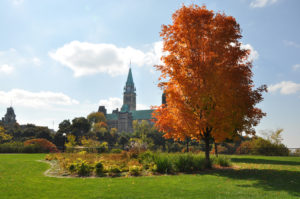Be wary of simple solutions on the foreign student issue
Ratna Omidvar is an independent senator from Ontario.

International foreign students in Canada have become a focal point for dissatisfaction with federal government policies on several fronts, particularly their impact on housing. There are also legitimate concerns that many students, enticed by unethical consultants, are in Canada not to study but to work and stay, using education as a backdoor entry point.
There is a growing suspicion that the international foreign student program, whose intention should be to provide quality education to both domestic and international students, has been hijacked by numerous stakeholders. These include provincial governments, which use the mega-bonanza of international student fees to beggar universities and colleges by capping grants or domestic student fees. The Ontario government actively encourages private institutions to partner with community colleges to gain the coveted “Designated Learning” status. The explosion of educational consultants, particularly in India, who often mislead students and their families for exorbitant fees, is another expression of unintended outcomes over which we have little or no control.
Reports indicate that there could be well more than a million international students in Canada. Since temporary residents, such as foreign students, do not feature in the yearly immigration level plans, their exponential growth has taken place largely under the radar. But no longer. Now, governments are scrambling for a response. The simple solution is to turn off the tap that we opened. Let’s tie the entry of foreign students to the availability of housing, suggests Conservative Leader Pierre Poilievre. Let’s wind back the number of students who enter Canada, Minister of Immigration Marc Miller has announced. But simple solutions often miss the nuances inherent in a complex matter.
Perhaps for the first time in our recent history, Canadians are responding with reduced support for immigration in general. This is serious. Immigration, which has never featured prominently in our election campaigns, threatens to become a focal point in the next election. Clearly, something needs to be done. Mr. Miller’s resolve to cut the number of international students across Canada, dividing the number of spots among the provinces, comes with intended and unintended outcomes. He is the Minister of Immigration and not the Minister of Education, and herein lies the crux of the problem.
Starved by provincial governments of stable funding, universities and colleges have turned increasingly to the only other source of revenue available to them. A 2022 Statistics Canada report said the share of college revenues provided by public funding has declined by 12 per cent since 2008. At the same time, the share of revenues from student fees increased by 15 per cent, driven mainly by the increase in enrolments of international students, who are often charged as much as five times more than domestic students. Ontario postsecondary institutions have become particularly vulnerable to financial pressure, with universities such as Queen’s reporting challenges.
Blunt instruments draw blood from all parts of the body, when a sharp scalpel is better suited to the surgery. Mr. Miller has chosen a blunt instrument. It will certainly draw blood. The underbelly of the industry, that he refers to as “puppy mills,” should and will close down. The limitation of postgraduation work permits to students from those institutions will limit the number who end up working behind the tills at big box stores and other low-paying outlets. Will these chains raise wages to get the staff they need? Will unemployed Canadians work in the retail, hospitality and tourism sectors over a sustained period of time? These are questions we don’t have the answers to.
We now face the serious risk that domestic students will face a drop in the quality of education they receive as universities and colleges lose fees from international students they have come to rely on. Provincial governments need to wake up. The “blue-ribbon” task force struck by Ontario Premier Doug Ford has made sensible proposals on stabilizing funding for universities and colleges, such as “a one-time significant adjustment in per-student funding for colleges and universities to recognize unusually high inflationary cost increases over the past several years,” and “a commitment to more modest annual adjustments over the next three to five years.” These types of recommendations need to be heeded and implemented promptly.
We have allowed ourselves to get tangled up in a sticky problem of our own making by all levels of government. But we can untangle ourselves from it if we go back to the basics of education. Providing high-quality education for Canadian students should not be reliant on external forces. Providing excellent education for foreign students must become an aspiration so we can educate young people from all over the world and they can take a bit of Canada back with them. Unfortunately, in higher education in Canada today, the tail is wagging the dog.
Read the article in The Globe and Mail